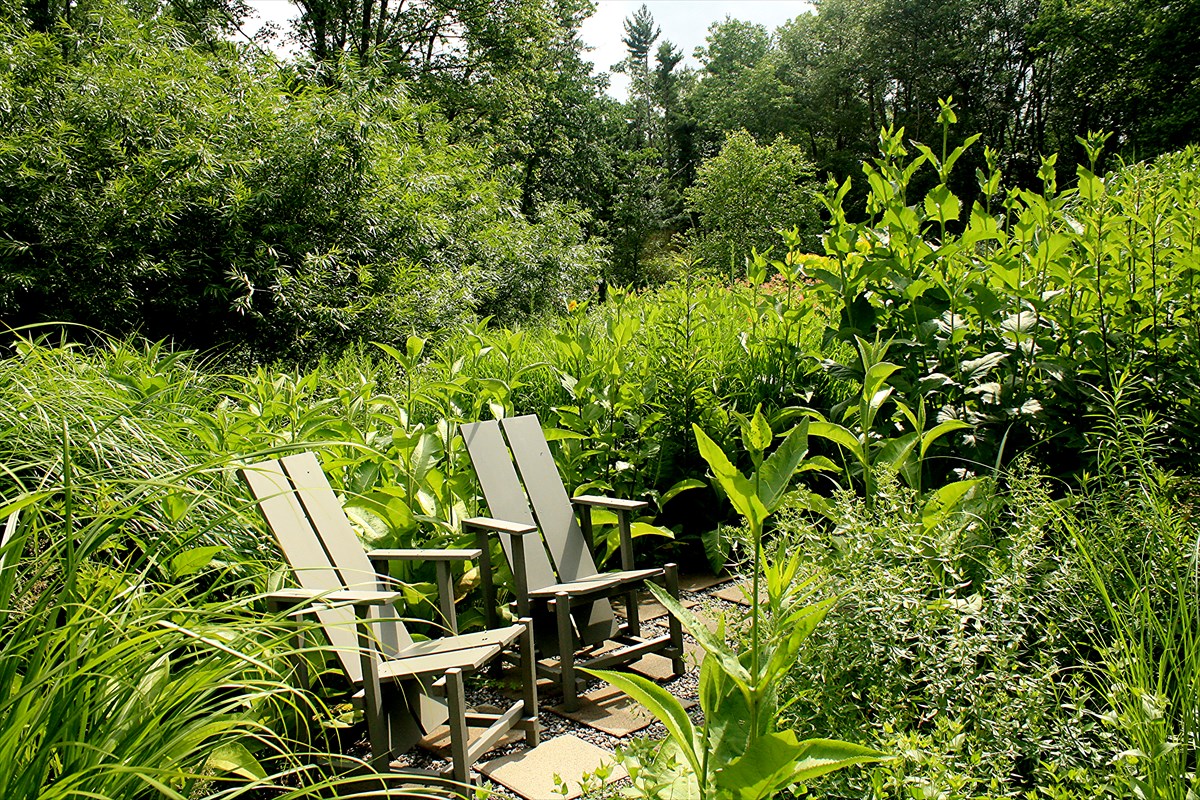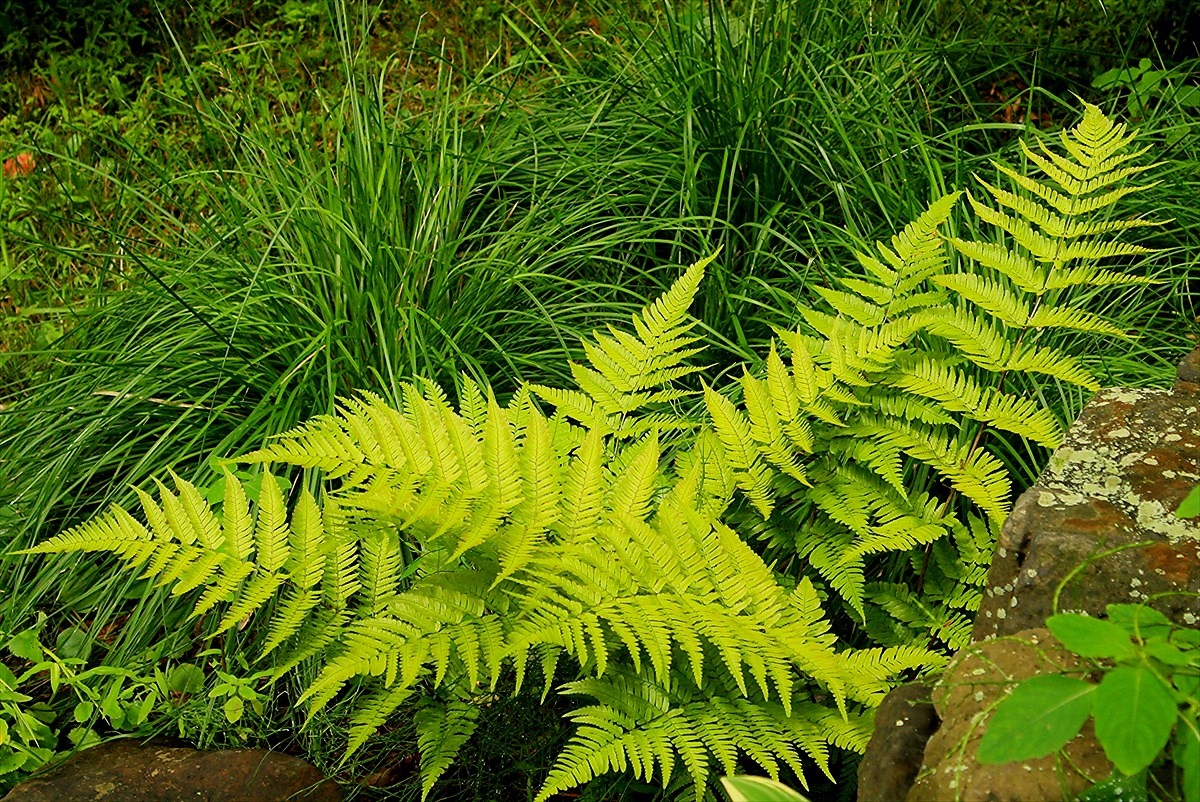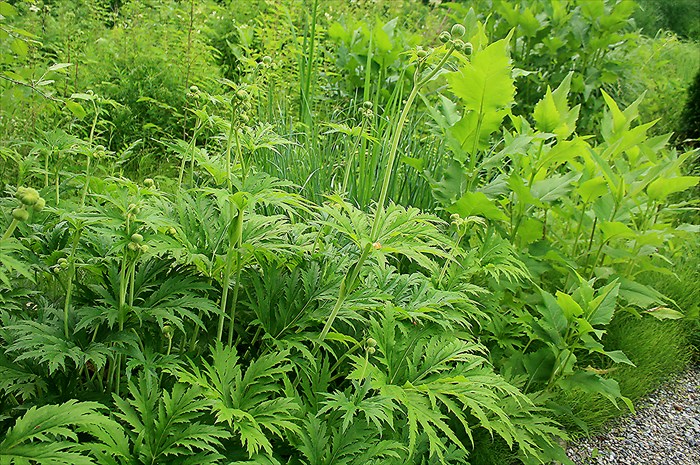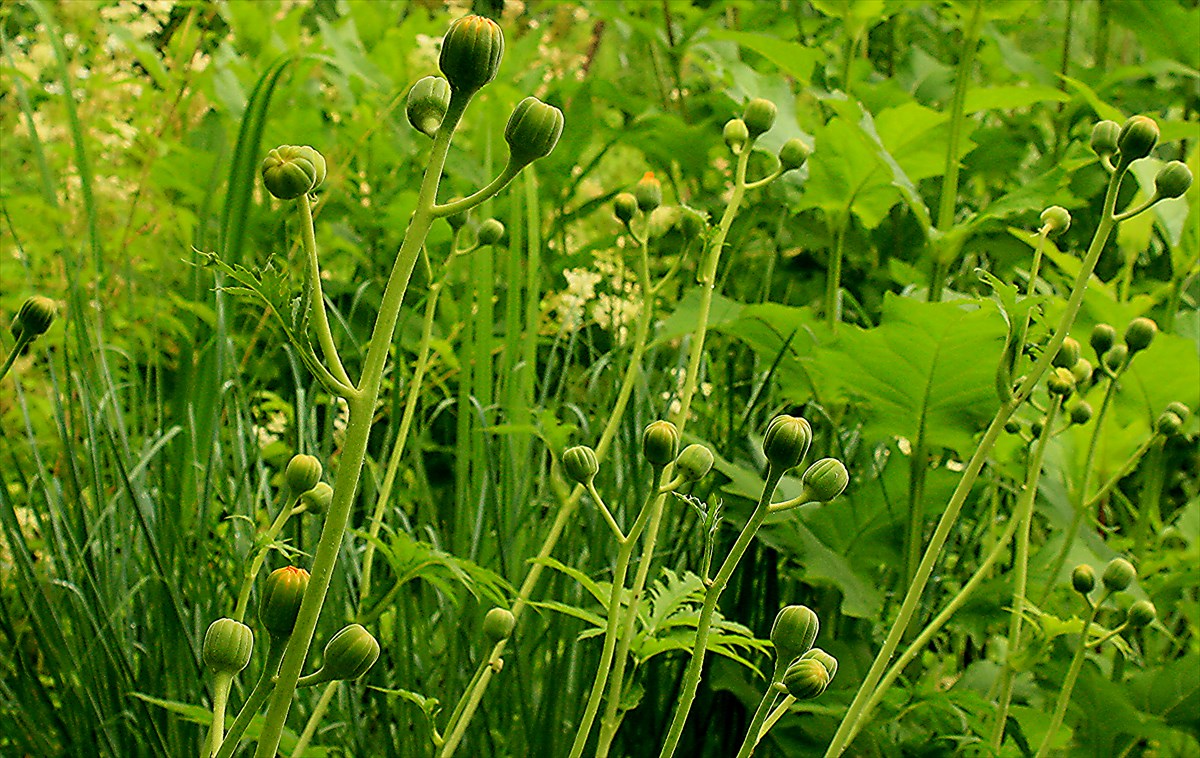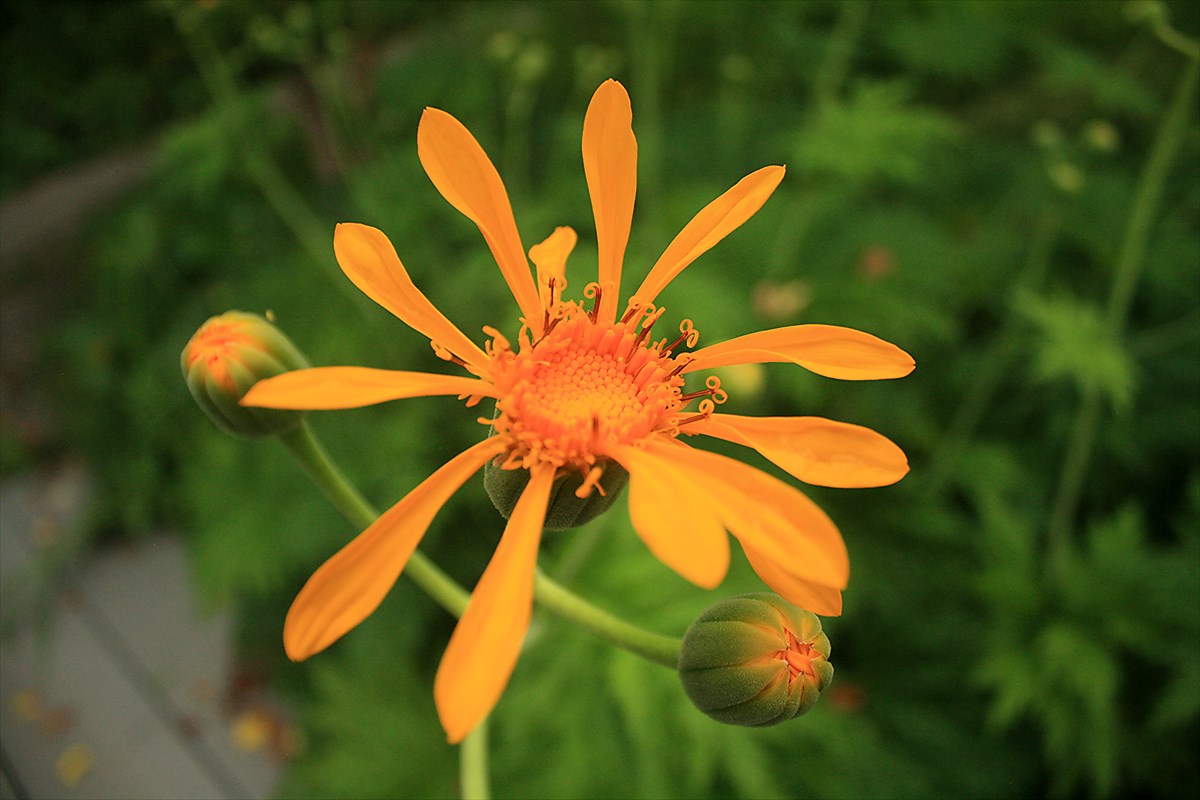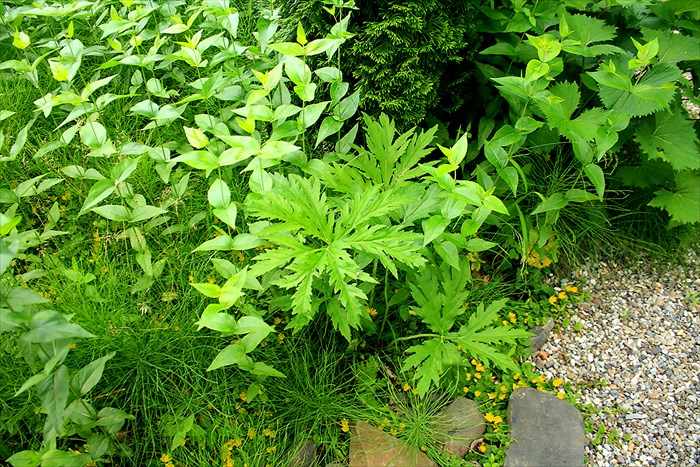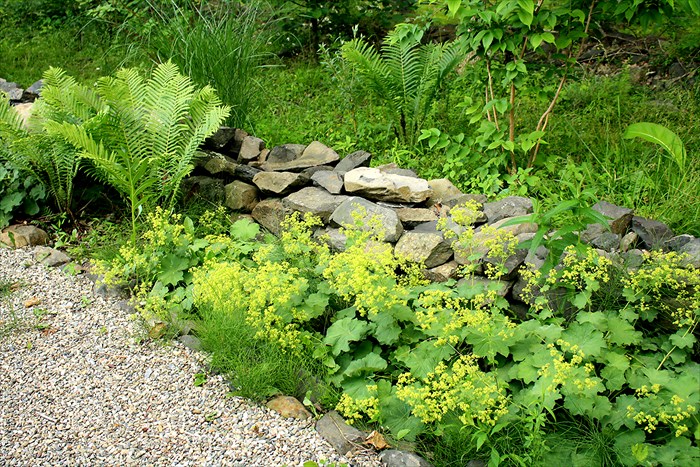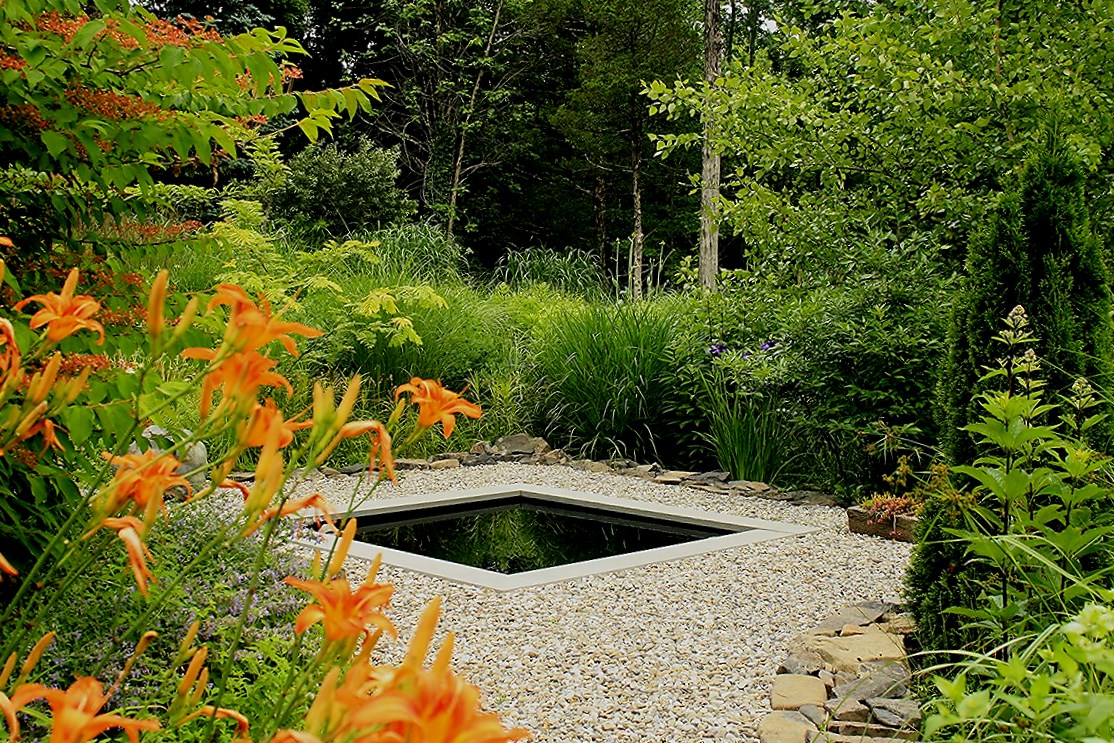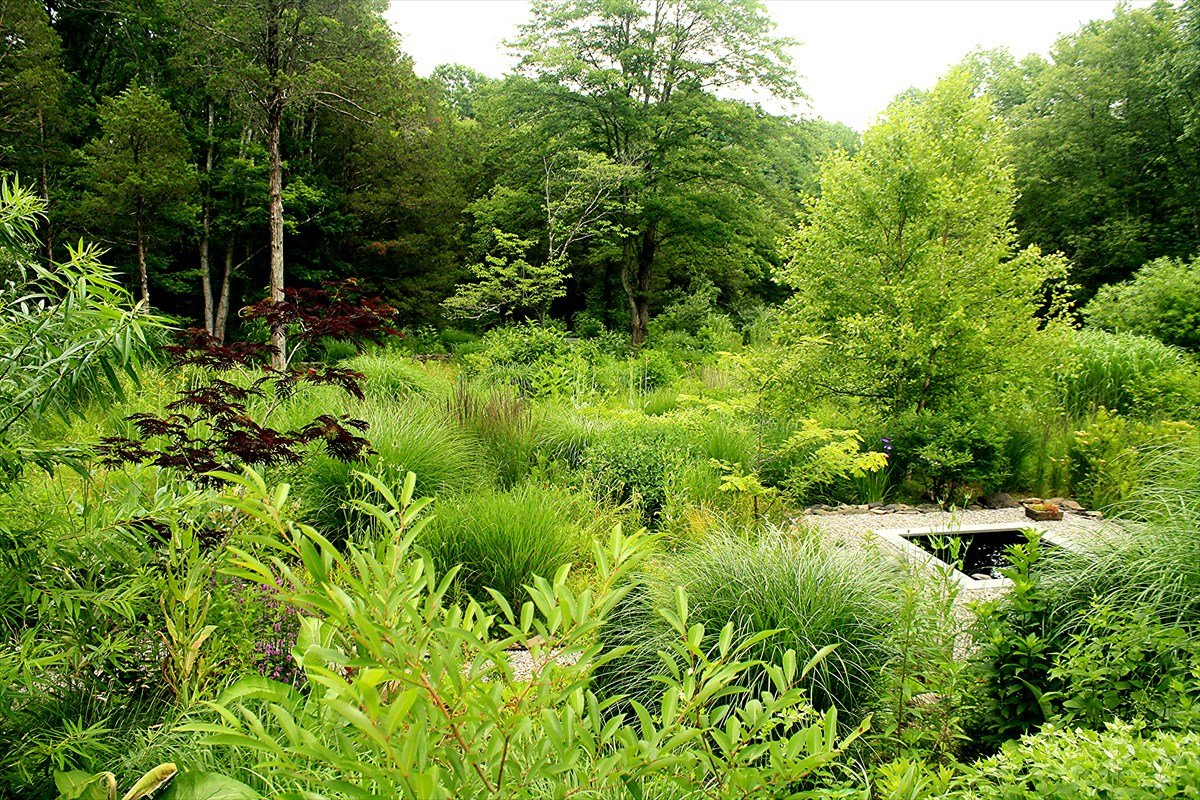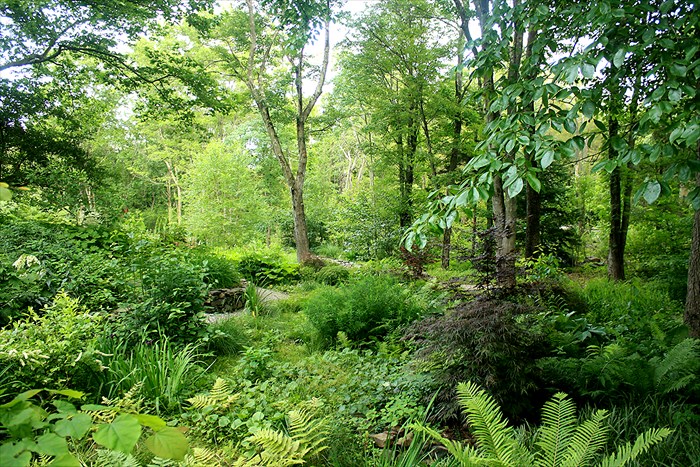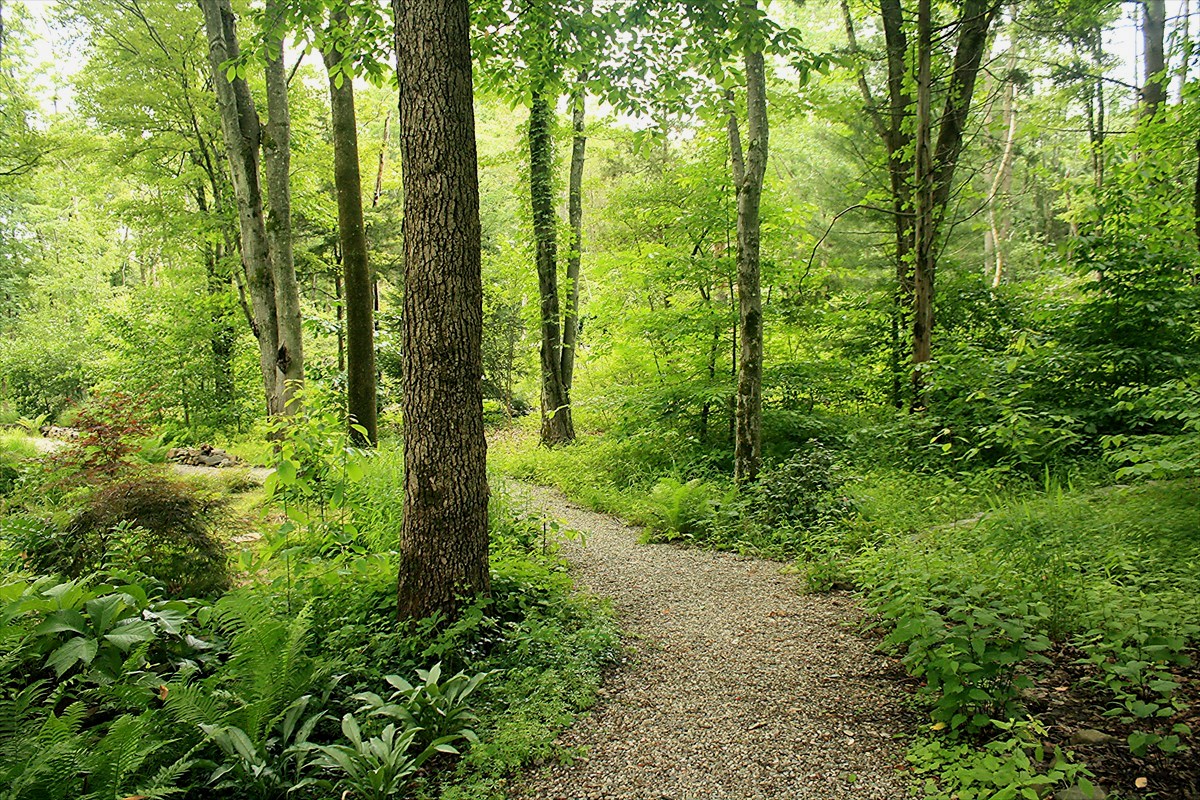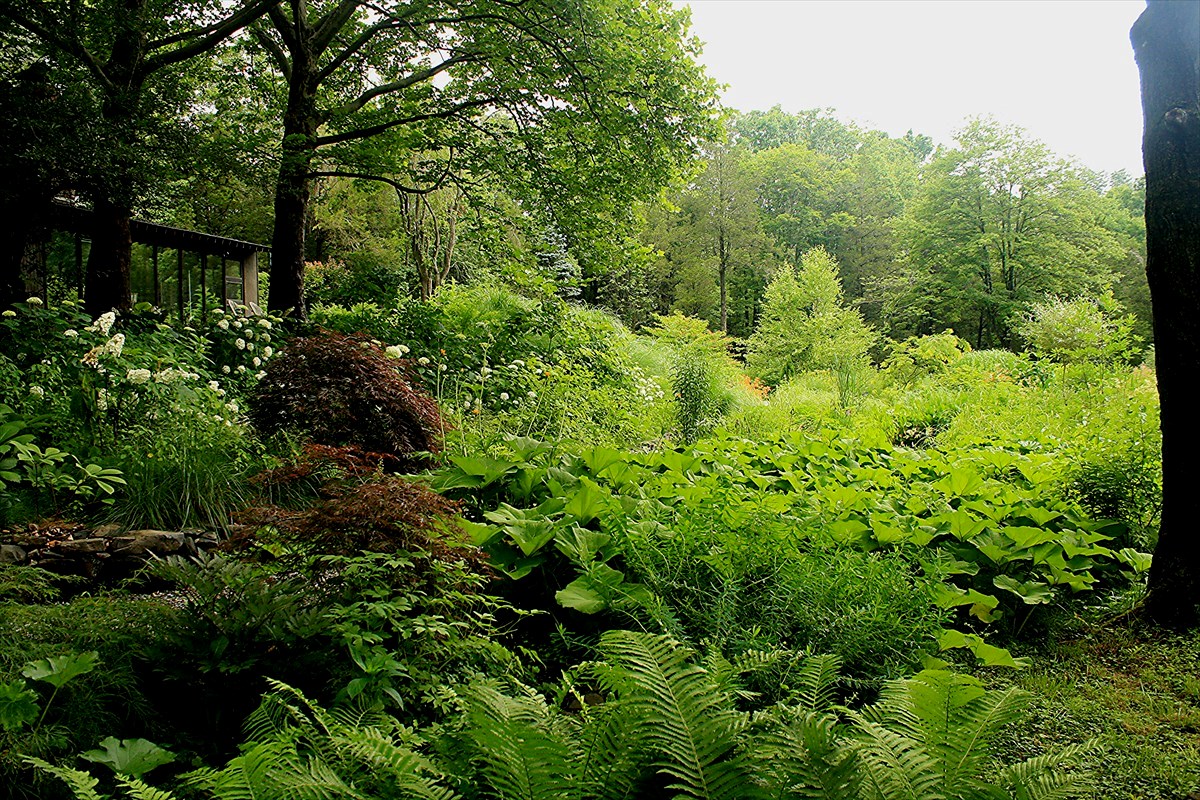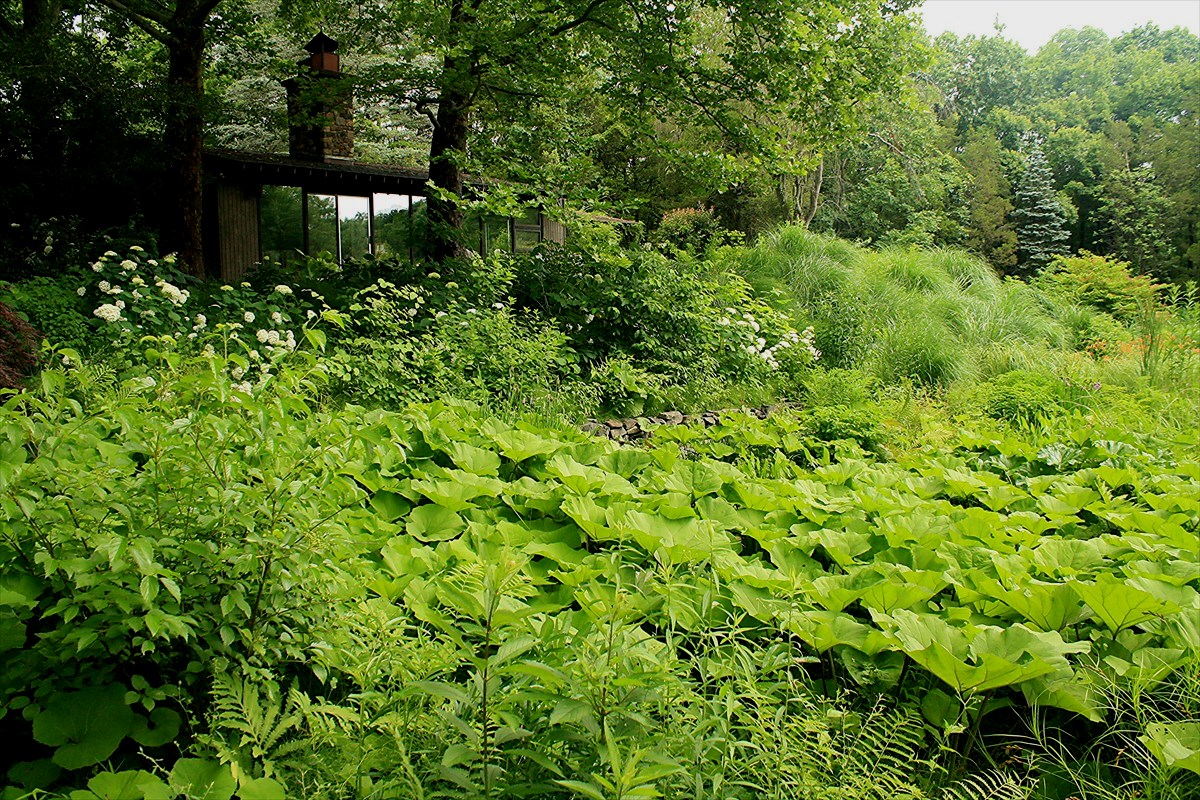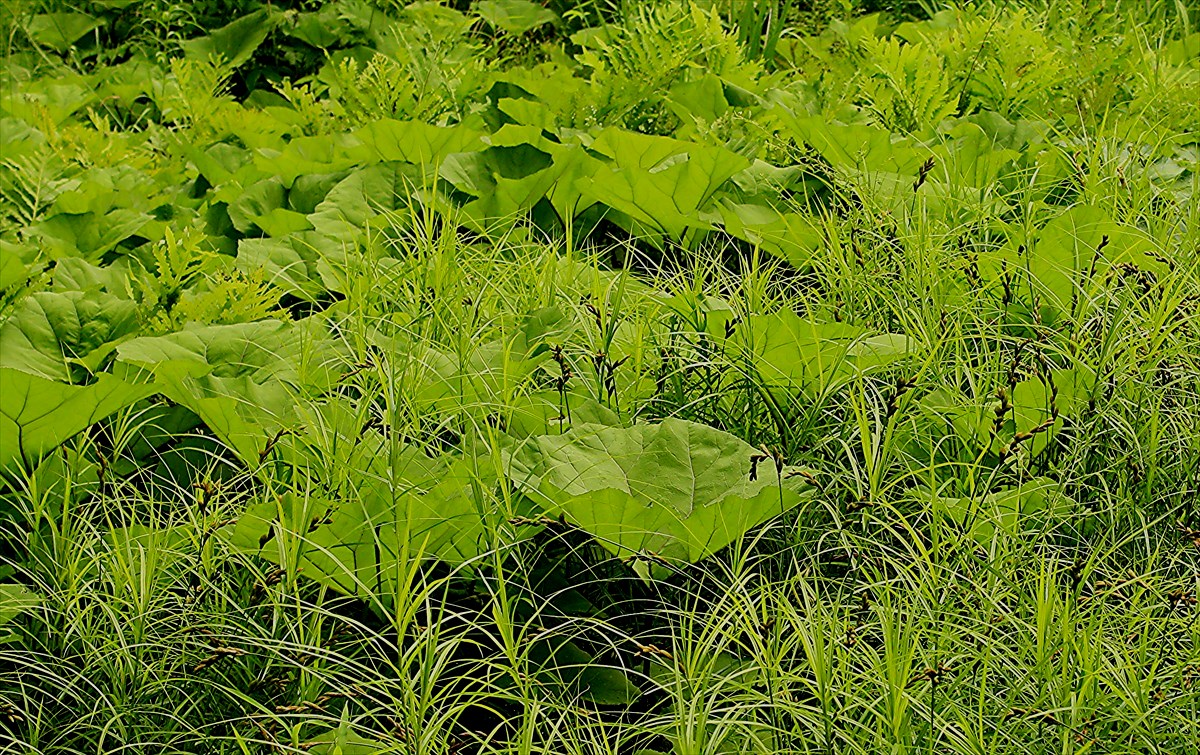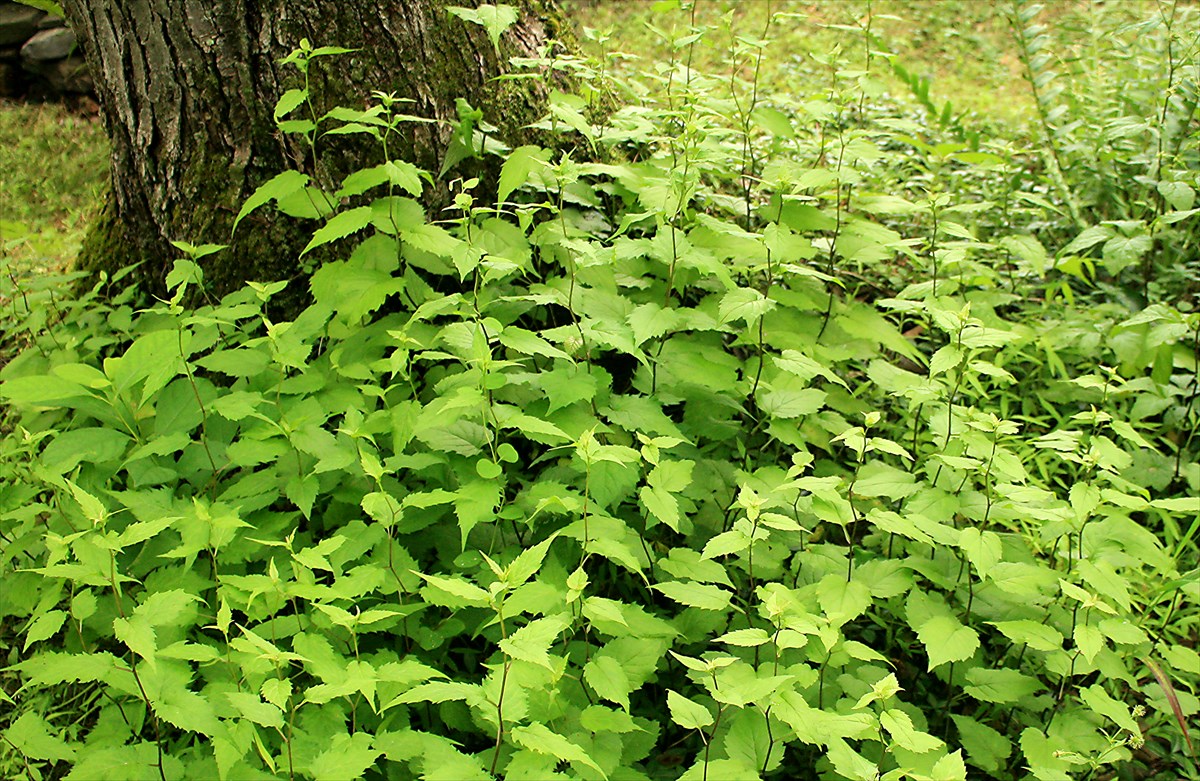Early summer

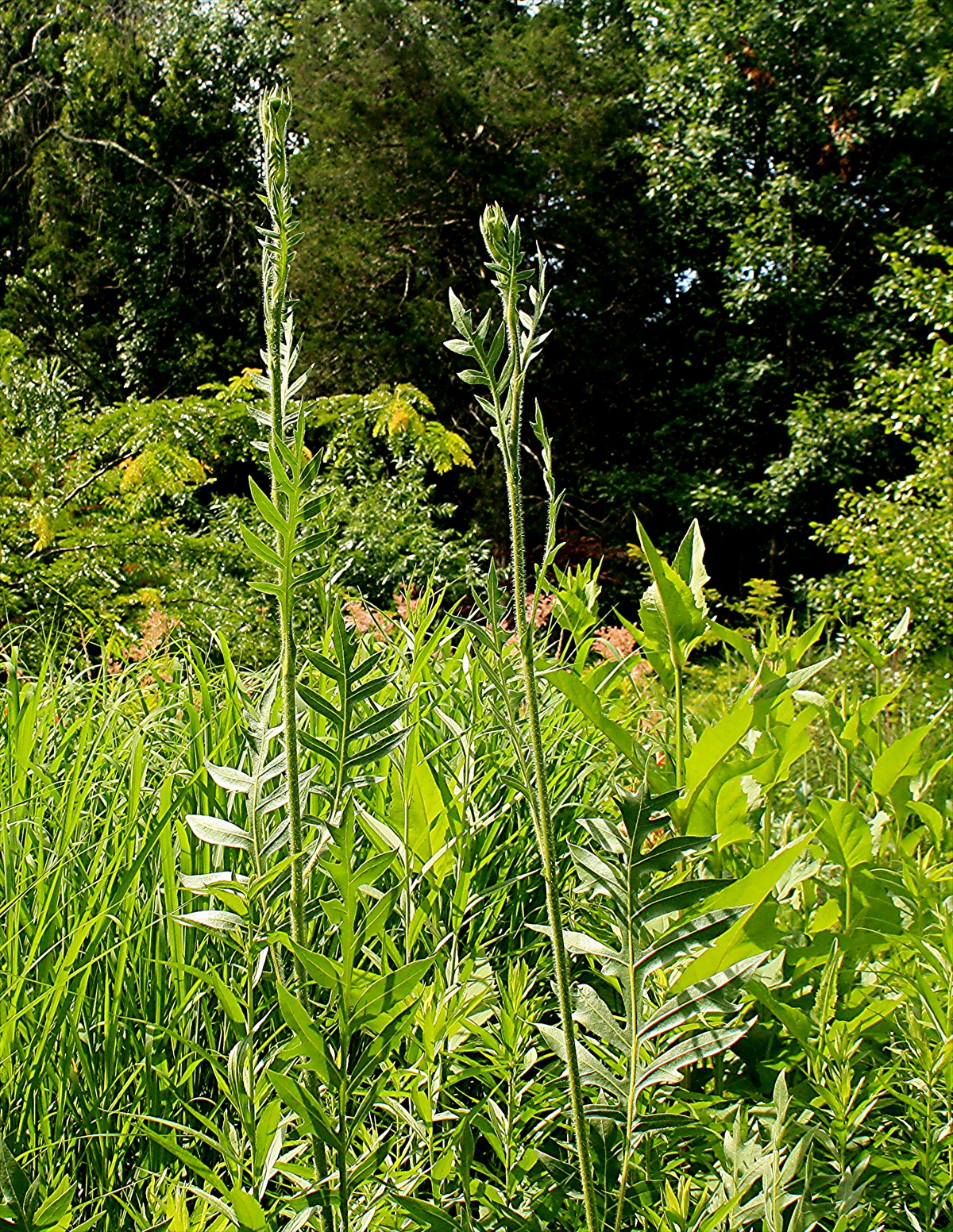 Early July and the flowering has begun. It's a pleasant diversion, but flowers aren't my primary interest in the garden. What really gets my attention are the sculptural forms of the plants and the complex patterns they make growing in community. Most of the garden is very tightly planted, by intention, so the patterning becomes quite complex. I push it to the max. Some might say it's messy, but I like it. It's edgy certainly, aesthetically risky, a delicate balance between chaos and order.Why do I so enjoy this? I don't really have an answer. Just a speculation. Do the plants mirror something inside me, some emotional parts? Because these garden tableaux do evoke powerful emotion. So does it come from some inborn disposition of the mind, as T.S. Eliot suggested when he used the term 'objective correlative':
Early July and the flowering has begun. It's a pleasant diversion, but flowers aren't my primary interest in the garden. What really gets my attention are the sculptural forms of the plants and the complex patterns they make growing in community. Most of the garden is very tightly planted, by intention, so the patterning becomes quite complex. I push it to the max. Some might say it's messy, but I like it. It's edgy certainly, aesthetically risky, a delicate balance between chaos and order.Why do I so enjoy this? I don't really have an answer. Just a speculation. Do the plants mirror something inside me, some emotional parts? Because these garden tableaux do evoke powerful emotion. So does it come from some inborn disposition of the mind, as T.S. Eliot suggested when he used the term 'objective correlative':
"The only way of expressing emotion in the form of art is by finding an 'objective correlative'; in other words, a set of objects, a situation, a chain of events which shall be the formula of that particular emotion; such that when the external facts, which must terminate in sensory experience, are given, the emotion is immediately evoked."
Am I observing such a "set of objects" and more or less reacting automatically with emotion? Maybe. I'm not sure. It may be a form of nostalgia, a result of that warmth and longing we have for remembered things. I can recall a time when I was about six years old, sitting in a field of vetch, in full bloom with those comb-like purple flowers. It was such a powerful emotional experience (I can't tell you why) that I've never forgotten it. Likely my emotional response to the garden stems from such early experience.What I'm talking about in practical terms is layering of plants--in this case, horizontal layering.Notice the patterns below from left to right--Rudbeckia maxima, floppy leaved Inula racemosa 'Sonnenspeer', tall Filipendula rubra 'Venusta' just coming into bloom, Astilbe taquetii 'Purple Lance', budded Liatris spicata, below it a weed I can't identify, but a weed with beautiful leaves that resemble miniature Filipendula foliage and white flowers that transform into stippled green balls, Onoclea sensibilis, trailing off into verticals of a small Vernonia.Behind that are more layers, to rise and fall with the season's passing, and behind that, Salix udensis 'Sekka', the Japanese Fantail willow. It's too busy, I admit, and I need to pull out the large leaved Inula. I'll do that this week. (Such editing is a regular part of my garden maintenance. "Weeding like a cow," to quote that creative Dutch plantsman, Henk Gerritsen.)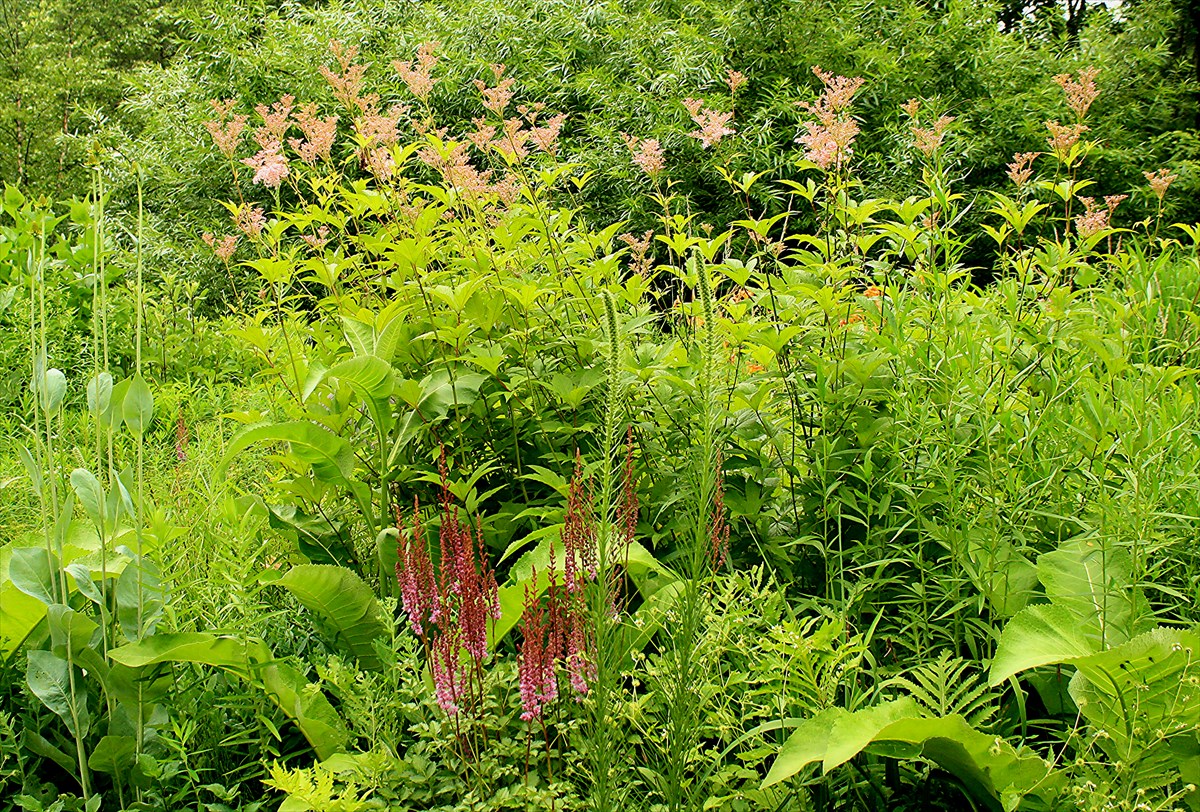 There's a lot going on visually, but in a three-dimensional view the plants sort themselves out nicely. And I do enjoy the complexity; it's a kind of visual feast.
There's a lot going on visually, but in a three-dimensional view the plants sort themselves out nicely. And I do enjoy the complexity; it's a kind of visual feast.
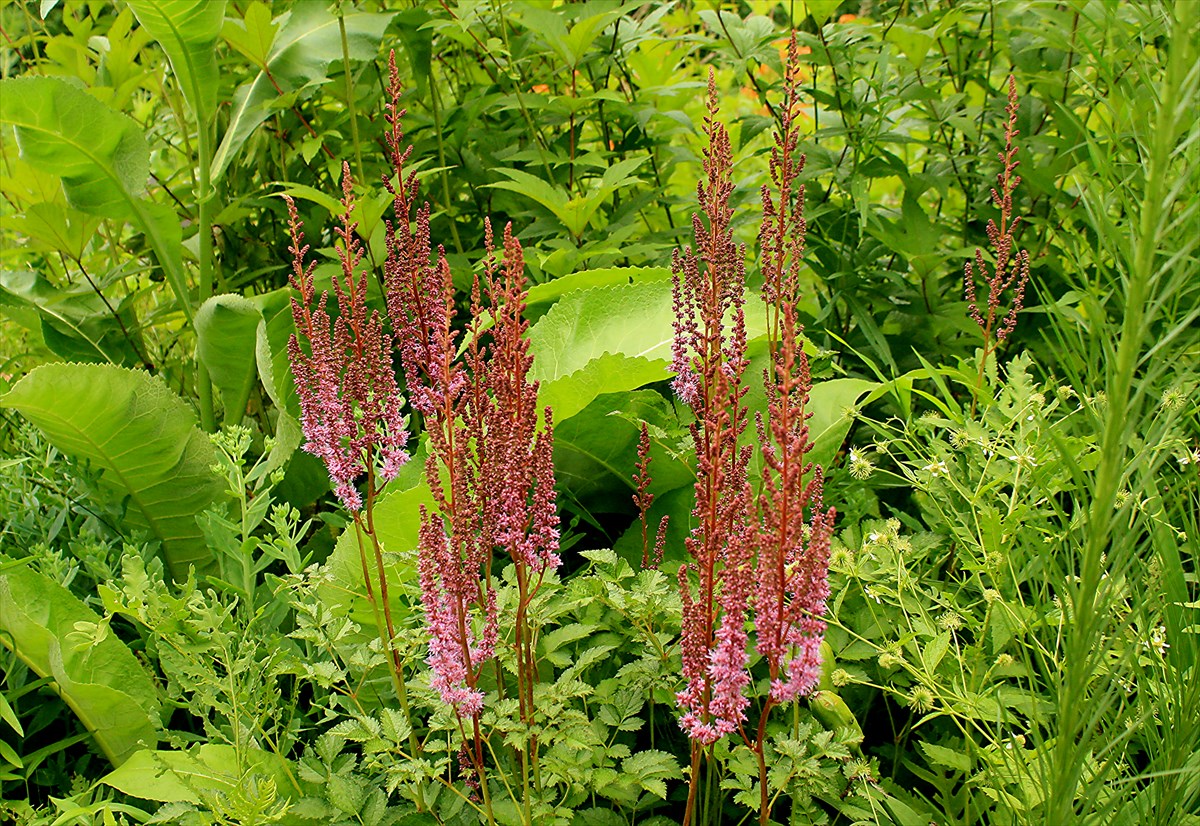 Another view of layering, with the Filipendula, the Fantail willow, and the tall tree canopy at the edge of the garden.
Another view of layering, with the Filipendula, the Fantail willow, and the tall tree canopy at the edge of the garden.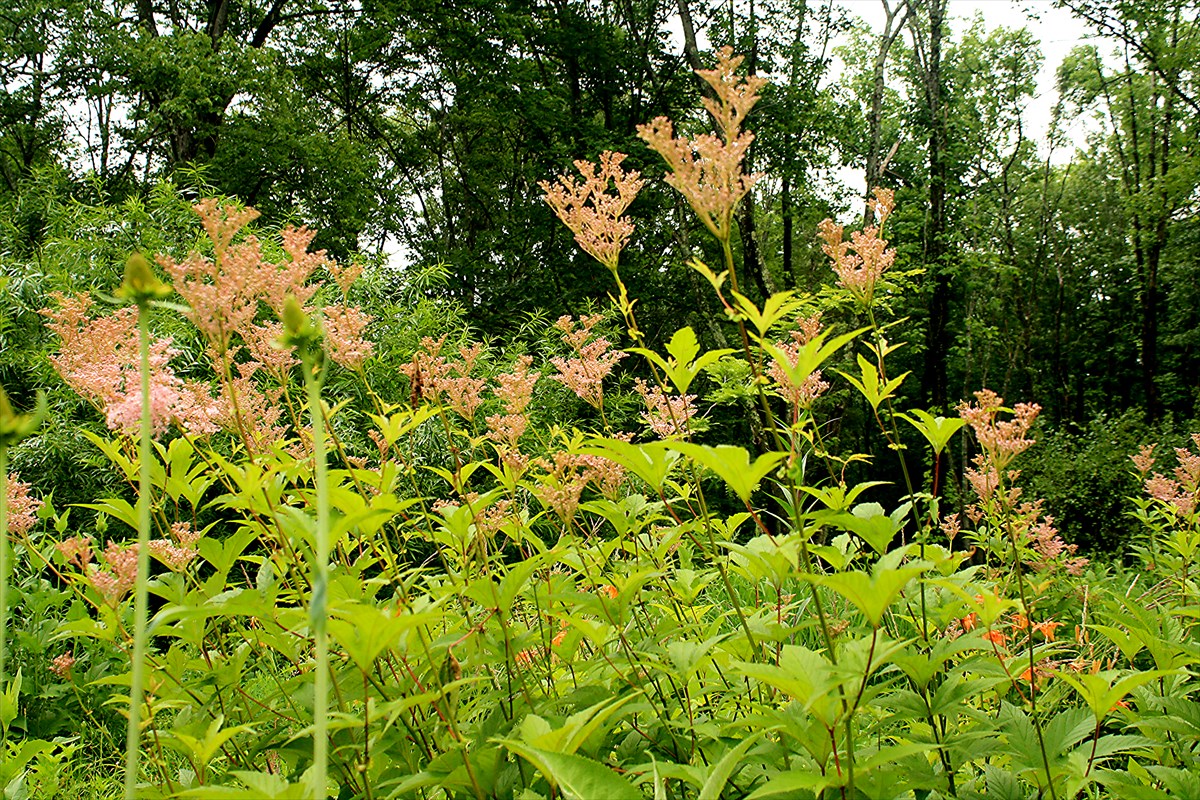 And another view showing the mounding effect as the willow and forest trees rise in the background.
And another view showing the mounding effect as the willow and forest trees rise in the background. In the flat photo view below, Miscanthus giganteus with Button Bush (Cephalanthus occidentalis) in front, Silphium perfoliatum at the lower edge, Rudbeckia maxima, Silphium laciniatum, Cercis 'Hearts of Gold', then more Rudbeckia maxima and Silphium perfoliatum. It's helpful to imagine walking and seeing the plants move in relationship to one another.
In the flat photo view below, Miscanthus giganteus with Button Bush (Cephalanthus occidentalis) in front, Silphium perfoliatum at the lower edge, Rudbeckia maxima, Silphium laciniatum, Cercis 'Hearts of Gold', then more Rudbeckia maxima and Silphium perfoliatum. It's helpful to imagine walking and seeing the plants move in relationship to one another.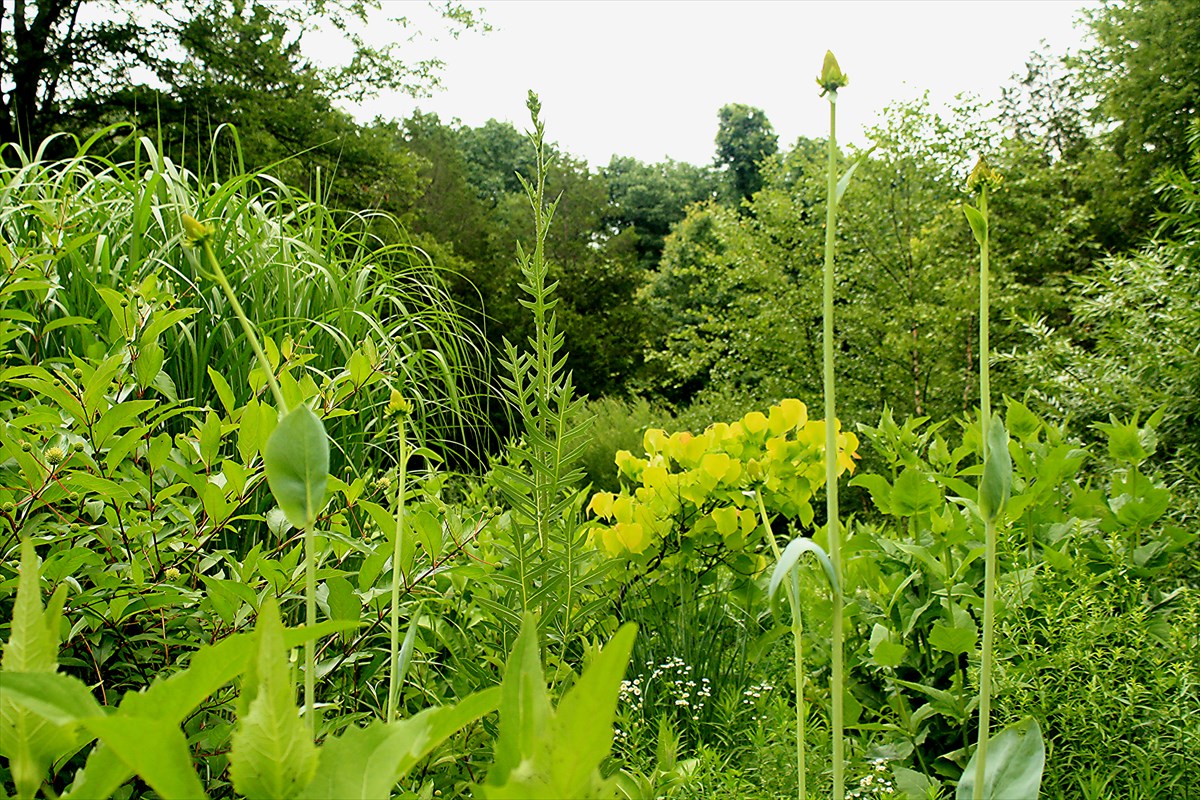 Below, Silphium laciniatum, backed by Salix udensis 'Sekka', with a Joe Pye Weed, seemingly at its foot (an illusion). This Silphium, one of the most ornamental to my eye, has finally found its pace and is self-seeding regularly, but politely, around the garden. The foliage is so extraordinary I can't think of pulling it out.
Below, Silphium laciniatum, backed by Salix udensis 'Sekka', with a Joe Pye Weed, seemingly at its foot (an illusion). This Silphium, one of the most ornamental to my eye, has finally found its pace and is self-seeding regularly, but politely, around the garden. The foliage is so extraordinary I can't think of pulling it out.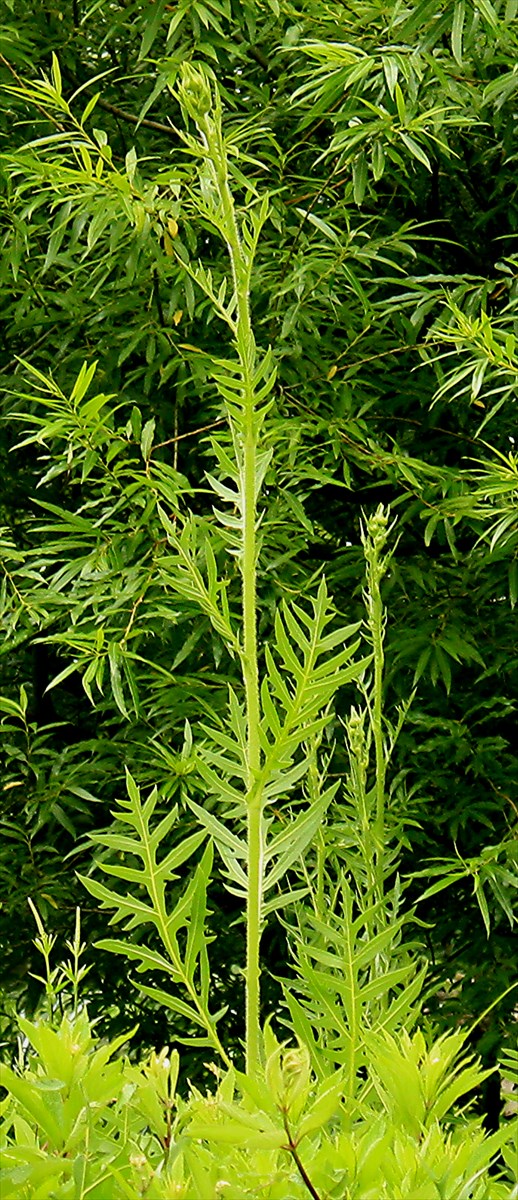 Is there a purpose to all this complex layering? No practical purpose I can think of. I don't think I'm a typical gardener, and I anticipate this will annoy some of you. I don't care at all for the usual utilitarian uses of a garden. It exists purely for, how should I put it? Aesthetic delight? A field for contemplation of the meaning of it all? The wonder that plants evolved such intricate structures, shapes, textures, forms, and purposes? An appreciation of mundane reality as a miracle of being? A glimpse into that amazing process whereby plants turn sunlight into food for bees, butterflies, moths, caterpillars, birds, frogs, all manner of bugs and other forms of animal life (humans too)?Yes. Those are some of my reasons. Others may add their own. I think my penchant for seeing the garden as a transcendent place may put me in a minority in 21st century American culture, but I may be wrong. I hope so.What do you think?Here's a wilder, more abstract bit. The large paddle-like leaves are Silphium terebinthinaceum rising up through a wild grass, which I'd like to think is native but probably isn't, with mounting, wobbly spires of Liatris pycnostachya still yet to bloom. This Silphium, another favorite for its extraordinary leaves and its intricate and delicate flowers, which droop slightly at the ends of tall, gracefully curving stalks, calls to mind some giant, over-scale jewelry. This one is self-seeded but has such large leaves I expect it may put up flower stalks this year.
Is there a purpose to all this complex layering? No practical purpose I can think of. I don't think I'm a typical gardener, and I anticipate this will annoy some of you. I don't care at all for the usual utilitarian uses of a garden. It exists purely for, how should I put it? Aesthetic delight? A field for contemplation of the meaning of it all? The wonder that plants evolved such intricate structures, shapes, textures, forms, and purposes? An appreciation of mundane reality as a miracle of being? A glimpse into that amazing process whereby plants turn sunlight into food for bees, butterflies, moths, caterpillars, birds, frogs, all manner of bugs and other forms of animal life (humans too)?Yes. Those are some of my reasons. Others may add their own. I think my penchant for seeing the garden as a transcendent place may put me in a minority in 21st century American culture, but I may be wrong. I hope so.What do you think?Here's a wilder, more abstract bit. The large paddle-like leaves are Silphium terebinthinaceum rising up through a wild grass, which I'd like to think is native but probably isn't, with mounting, wobbly spires of Liatris pycnostachya still yet to bloom. This Silphium, another favorite for its extraordinary leaves and its intricate and delicate flowers, which droop slightly at the ends of tall, gracefully curving stalks, calls to mind some giant, over-scale jewelry. This one is self-seeded but has such large leaves I expect it may put up flower stalks this year.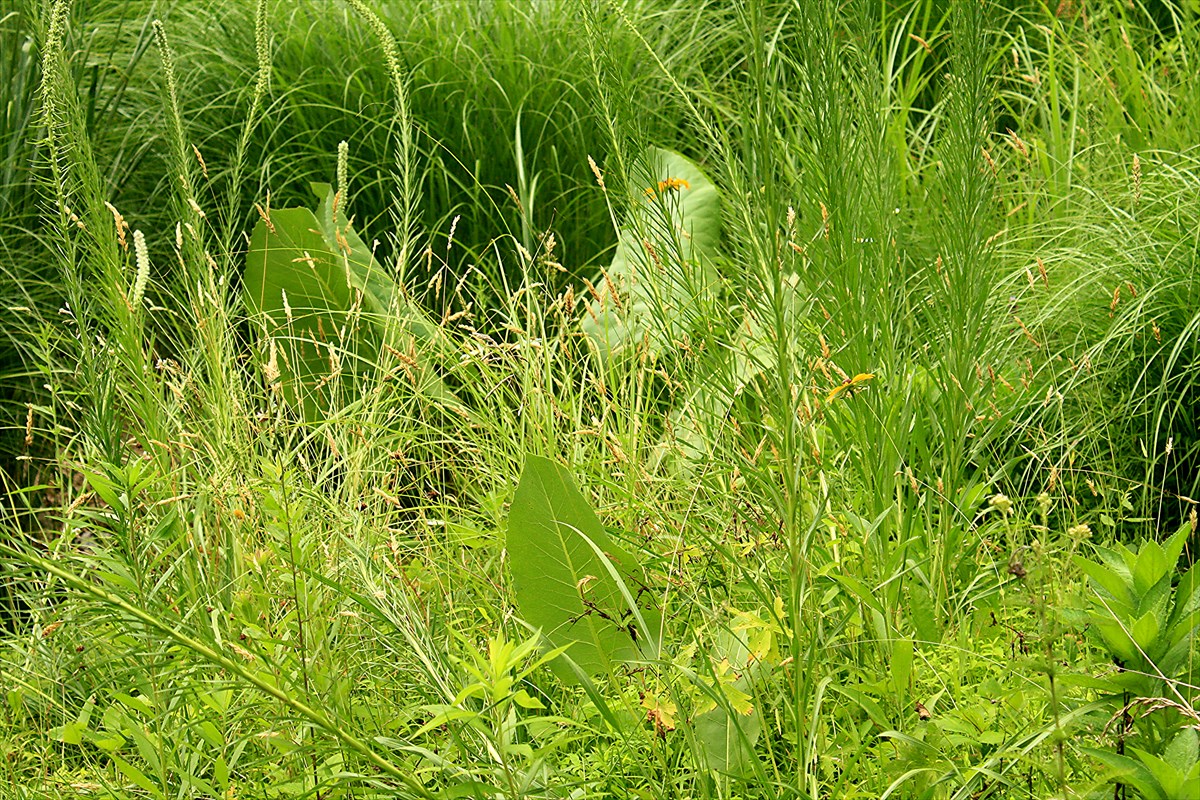 At the opposite side of the garden, another example, but here is layering of light and shade, of living plants and dead trees. There is also obvious vertical layering, with the Salix hanging over the gravel path, nodding to the long pile of logs on the other side--the space between them strewn with the beautifully textured and notoriously self-seeding Inula racemosa. A long drift of yellow daylilies on the right will add color in another week or so.
At the opposite side of the garden, another example, but here is layering of light and shade, of living plants and dead trees. There is also obvious vertical layering, with the Salix hanging over the gravel path, nodding to the long pile of logs on the other side--the space between them strewn with the beautifully textured and notoriously self-seeding Inula racemosa. A long drift of yellow daylilies on the right will add color in another week or so. I've been reading Rick Darke's and Doug Tallamy's The Living Landscape: Designing for beauty and biodiversity in the home garden. Layering is a principal focus of this important new book, and now that I'm reading it I see layering everywhere I look.Here is layering of wildlife and plant life, a bumble bee on a Button Bush (Cephalanthus occidentalis). Insects, frogs, snakes, birds, many forms of animal life add yet another layer of meaning.
I've been reading Rick Darke's and Doug Tallamy's The Living Landscape: Designing for beauty and biodiversity in the home garden. Layering is a principal focus of this important new book, and now that I'm reading it I see layering everywhere I look.Here is layering of wildlife and plant life, a bumble bee on a Button Bush (Cephalanthus occidentalis). Insects, frogs, snakes, birds, many forms of animal life add yet another layer of meaning.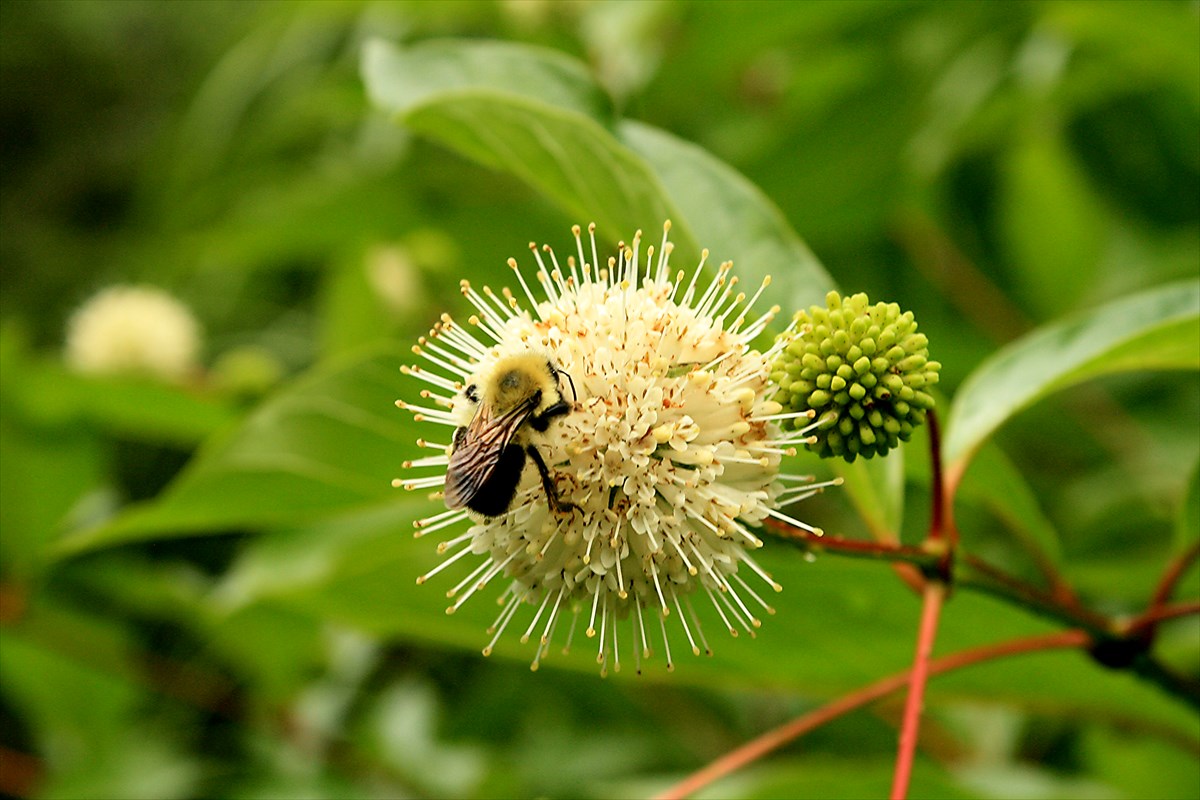 Another kind of layering, with color, as well as temporal layering; the red daylilies will fade away within a week or two, becoming essentially invisible.
Another kind of layering, with color, as well as temporal layering; the red daylilies will fade away within a week or two, becoming essentially invisible.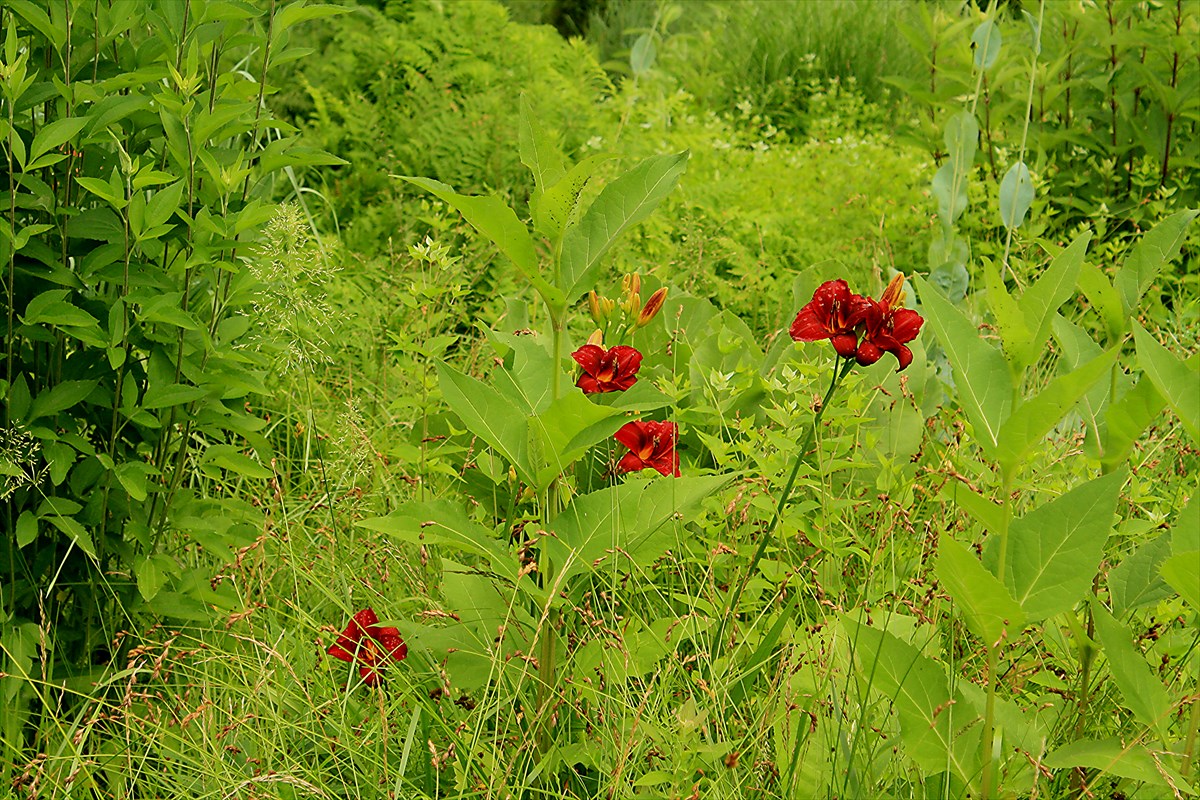
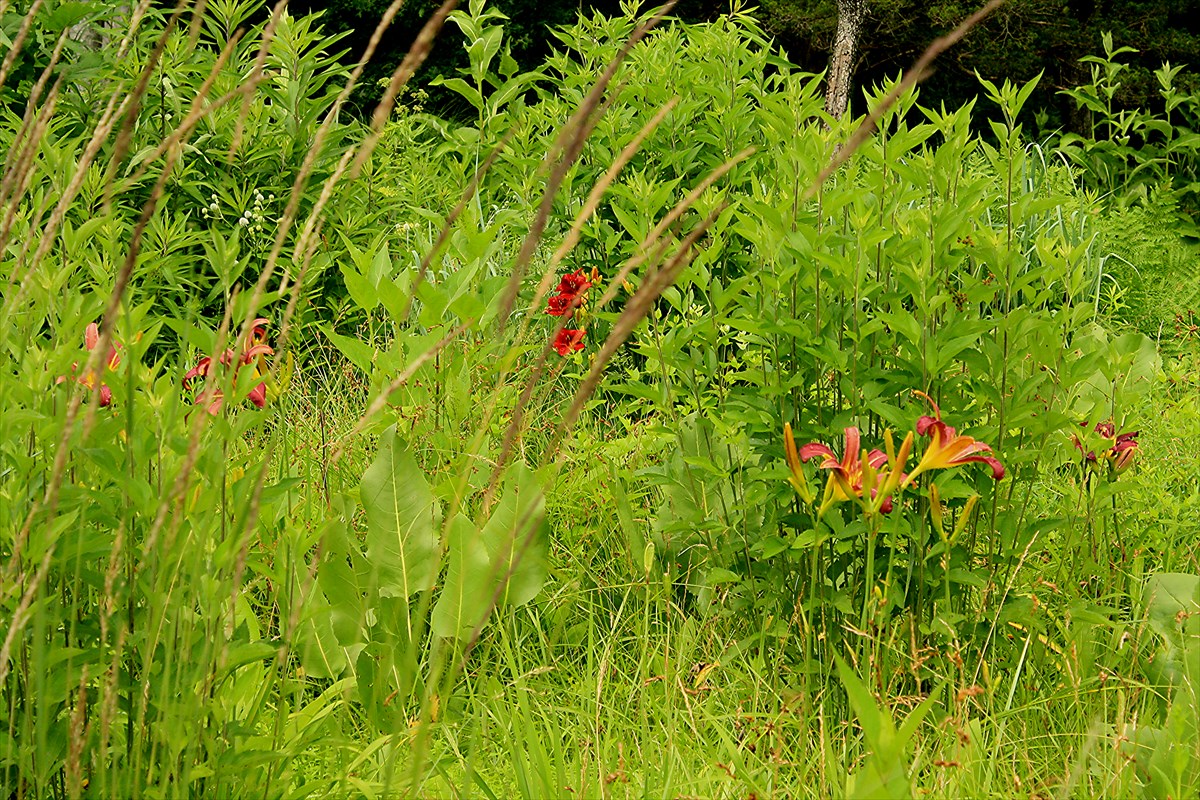 Observing the garden in close-up is another kind of layering, an experiential layering. This is Rattlesnake Master (Eryngium yuccafolium), which I'm very happy to find is spreading itself around freely. I look forward to having masses of this beautiful, and exotic looking, native plant in years to come.
Observing the garden in close-up is another kind of layering, an experiential layering. This is Rattlesnake Master (Eryngium yuccafolium), which I'm very happy to find is spreading itself around freely. I look forward to having masses of this beautiful, and exotic looking, native plant in years to come.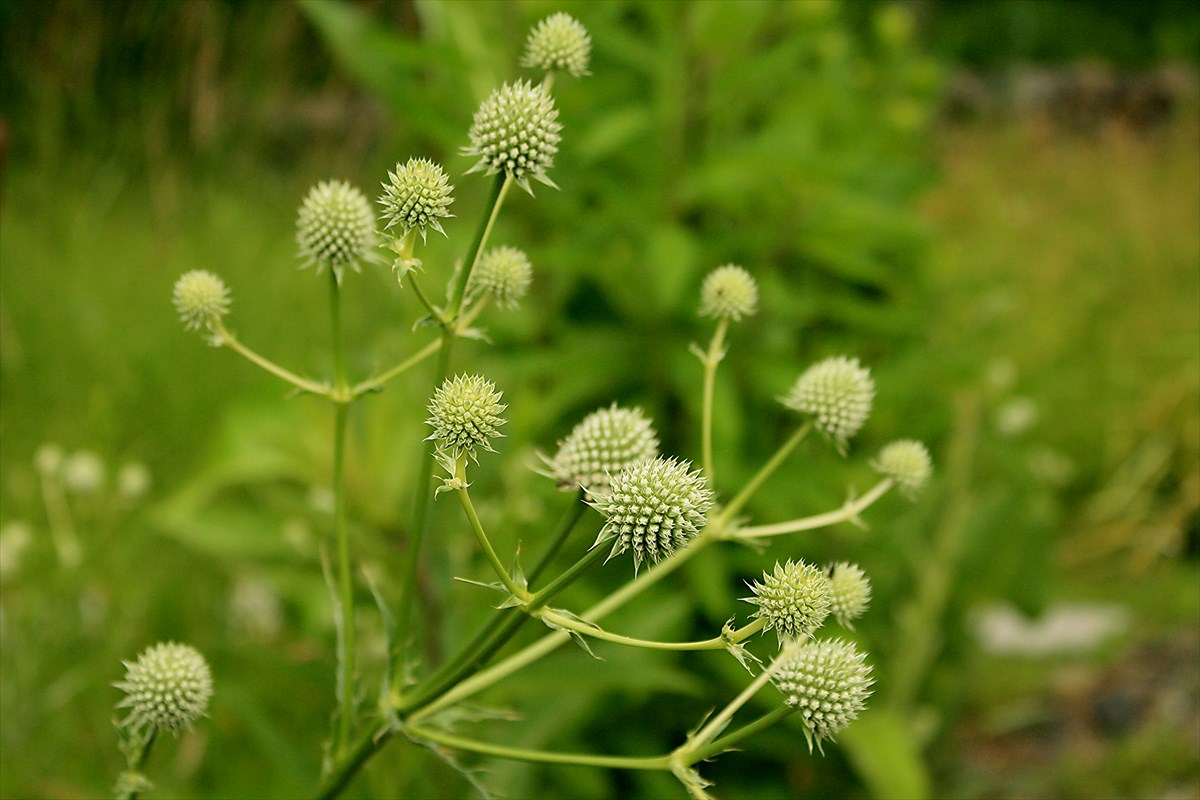
 I do tend to blather on far too long, so here are some more images to look at in slience.
I do tend to blather on far too long, so here are some more images to look at in slience.